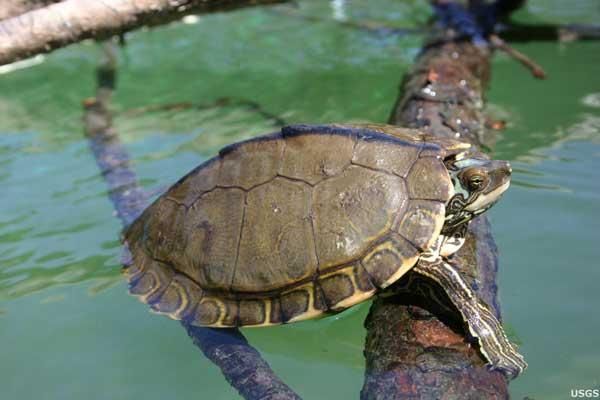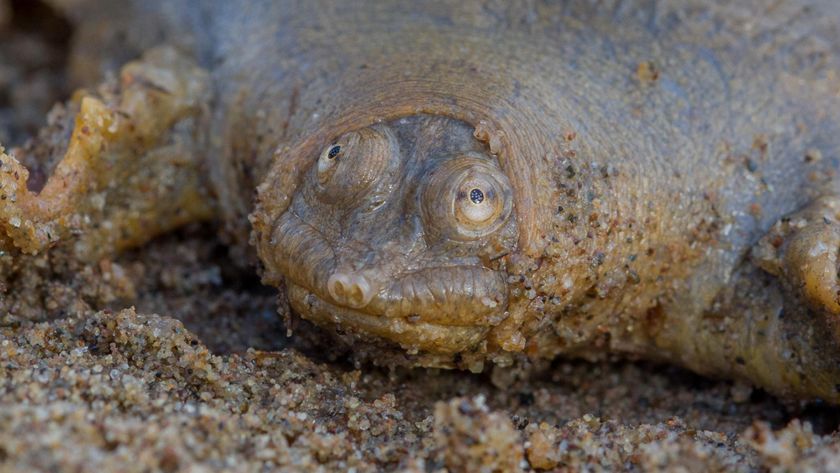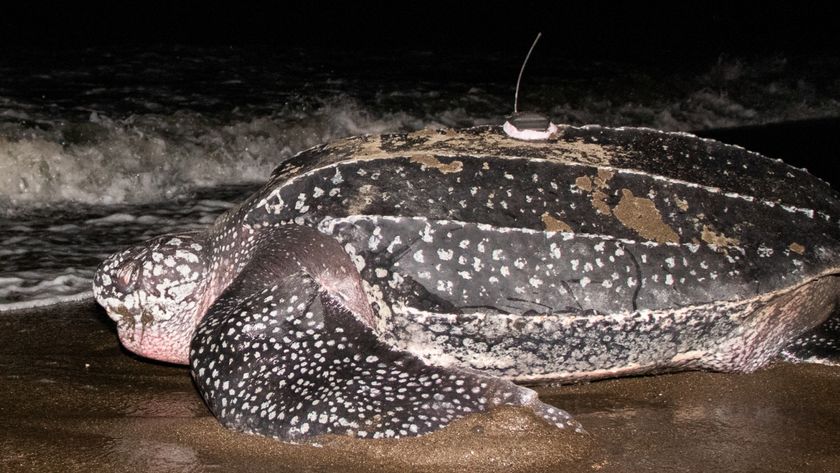
First Newfound U.S. Turtle Species in Years Discovered

A previously unknown species of turtle, no larger than a small dinner plate, has been discovered in the Pearl River, which flows down through central Mississippi and forms the state's border with Louisiana.
The Pearl River map turtle (Graptemys pearlensis), discovered by scientists from the U.S. Geological Survey (USGS), had previously been confused with another species in a nearby river, the Pascagoula map turtle.
The discovery was something of an accident.
USGS scientist John Ennen stumbled upon the newfound reptile species while researching turtles for his dissertation. He noticed subtle differences between turtles in the Pascagoula River and the Pearl River, and subsequent genetic analysis confirmed that the two river turtles were distinct species.
The newly identified turtle species is the first to be discovered in the United States since 1992, and brings the grand total of native U.S. turtle species to 57.
The Pearl River map turtle sports an unbroken black line down its back. Females are much larger than males, measuring between 6 and 11 inches (15 and 28 centimeters) as adults, and use large crushing surfaces on their jaws to open clams. Males, meanwhile, grow to a comparatively puny 4 to 6 inches (10 to 15 cm) and eat some mollusks, but mostly dine on insects and fish.
Ennen said the research reveals that there's still much wildlife to be discovered, some of it very close to home.
Sign up for the Live Science daily newsletter now
Get the world’s most fascinating discoveries delivered straight to your inbox.
"When people think about discovery and new species, they think of rainforests, or unexplored and isolated countries," he said. "Coming from southern Mississippi, I basically found this turtle in my own backyard."












